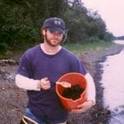
Article
Forecasting Environmental Responses to Restoration of Rivers Used as Log Floatways: An Interdisciplinary Challenge
Ecosystems
(2005)
Abstract
Log floating in the 19th to mid 20th centuries has profoundly changed the environmental conditions in many northern river systems of the world. Regulation of flow by dams, straightening and narrowing of channels by various piers and wing dams, and homogenization of bed structure are some of the major impacts. As a result, the conditions for many riverine organisms have been altered. Removing physical constructions and returning boulders to the channels can potentially restore conditions for these organisms. Here we describe the history of log driving, review its impact on physical and biological conditions and processes, and predict the responses to restoration. Reviewing the literature on comparable restoration efforts and building upon this knowledge, using boreal Swedish rivers as an example, we address the last point. We hypothesize that restoration measures will make rivers wider and more sinuous, and provide rougher bottoms, thus improving land-water interactions and increasing the retention capacity of water, sediment, organic matter and nutrients. The geomorphic and hydraulic/hydrologic alterations are supposed to favor production, diversity, migration and reproduction of riparian and aquatic organisms. The response rates are likely to vary according to the types of processes and organisms. Some habitat components, such as beds of very large boulders and bedrock outcrops, and availability of sediment and large woody debris are believed to be extremely difficult to restore. Monitoring and evaluation at several scales are needed to test our predictions.
Keywords
- Channelization,
- Fish,
- Floatways,
- Forecasting,
- Invertebrate,
- Log floating,
- Recovery,
- Restoration,
- Retention,
- Riparian ecosystems,
- River,
- Sweden,
- Transport history
Disciplines
Publication Date
November, 2005
Publisher Statement
Published by: Springer Stable URL: http://www.jstor.org/stable/25053875
Citation Information
James M. Helfield, Christer Nilsson, Fabio Lepori, Bjorn Malmqvist, et al.. "Forecasting Environmental Responses to Restoration of Rivers Used as Log Floatways: An Interdisciplinary Challenge" Ecosystems Vol. 8 Iss. 7 (2005) Available at: http://works.bepress.com/helfield_james/6/
